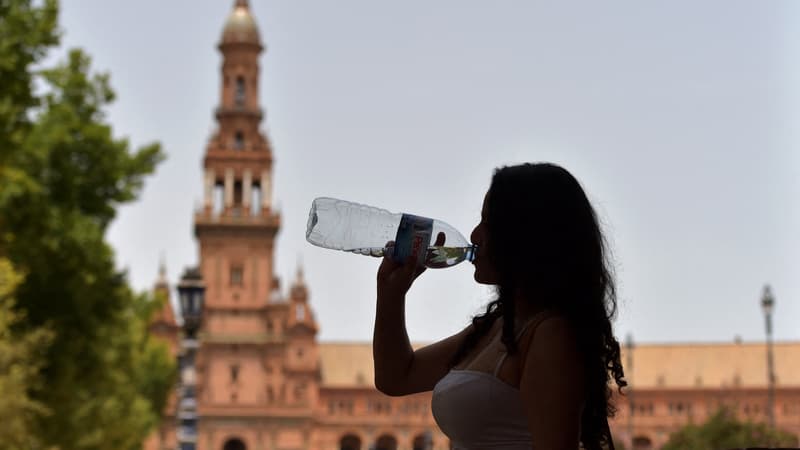Midsummer in April: Already hit by a catastrophic drought, Spain will experience an exceptionally hot episode this week, with peaks of 40°C expected, further signs of accelerating global warming.
Linked to the arrival of a “very hot and dry air mass of African origin”, it will result in “exceptionally high temperatures for this time of year”, the Spanish Meteorological Agency (Aemet) has announced in a press release.
According to the public institute, temperatures will exceed 30°C on Tuesday and Wednesday in much of the south of the country, with possible peaks of 35°C – that is, “summer values” – in Andalusia (south) and in the regions from Valencia and Murcia (southeast).
Then they will continue their progression until reaching “35°C in general” on Thursday and Friday in the southern half of the country and the Ebro valley (northeast), and even “40°C” in the Guadalquivir valley, in the heart of Andalusia. .
These temperatures will be “6 to 10°C” higher on average than normal for the season, Aemet specifies. But in some places they will even exceed “15 to 20 degrees” the normal values of the end of April, the spokesman for the agency, Rubén del Campo, specified on Twitter.
Several European meteorologists speak of a “heat wave”, even a “heat wave”.
“irreversible damage”
This episode of heat comes as Spain is experiencing an abnormally hot and dry spring, particularly in Catalonia (northeast), which is facing its worst drought in decades, and where authorities have already issued orders to reduce water use.
Due to the lack of rain, the reservoirs – which store rainwater so it can be used in the drier months – are at only a quarter of their capacity in this region, according to local authorities. And many farmers have had to abandon their crops in recent weeks.
“We are in a hydrologically difficult moment,” especially since Spanish groundwater and reservoirs have been damaged in recent years due to a chronic lack of rainfall, the Minister of Agriculture, Luis Planas, admitted last week.
In a press release, the Asaja confederation of agrarian businessmen also raised the alarm. “The intensity of this drought is terrible” and leads to a “chaotic” situation, with heavy losses expected for grain and oilseed crops, he said.
According to Coag, the main farmers’ union, 60% of Spanish agricultural land is currently “suffocated” by the lack of rain. “Irreversible damage has been caused to more than 3.5 million hectares of cereals,” he worries.
high risk of fire
Selon l’Aemet, cet épisode de chaleur précoce, coupled with a soutenu vent et à une très lowe humidité, va accroître le risque d’incendies au cours des prochains jours, alors que les pompiers ont déjà combattu plusieurs feux de forêt importantes depuis la end of March.
According to the European Information System on Forest Fires (Effis), Spain is already at a record for areas burned since the beginning of the year, with 54,000 hectares affected on April 23, compared to 17,126 hectares at the end of the same date in 2022, the year fire record.
A European country on the front line in the face of climate change, with almost 75% of its territory in the process of desertification according to the UN, Spain experienced the hottest year on record last year, with several waves of scorching heat, according to Aemet.
The phenomenon, linked according to experts to the acceleration of global warming, has brought the issue of water to the forefront of the political scene in recent days in the country, in the context of the electoral campaign for the regional elections at the end of May. and the legislative elections scheduled for the end of the year.
Spain must “review” its way of managing this “increasingly scarce asset”, stressed last week the President of the Socialist Government, Pedro Sánchez, when 80% of the country’s water is currently used for agriculture, particularly for fruits and vegetables for export.
Source: BFM TV


